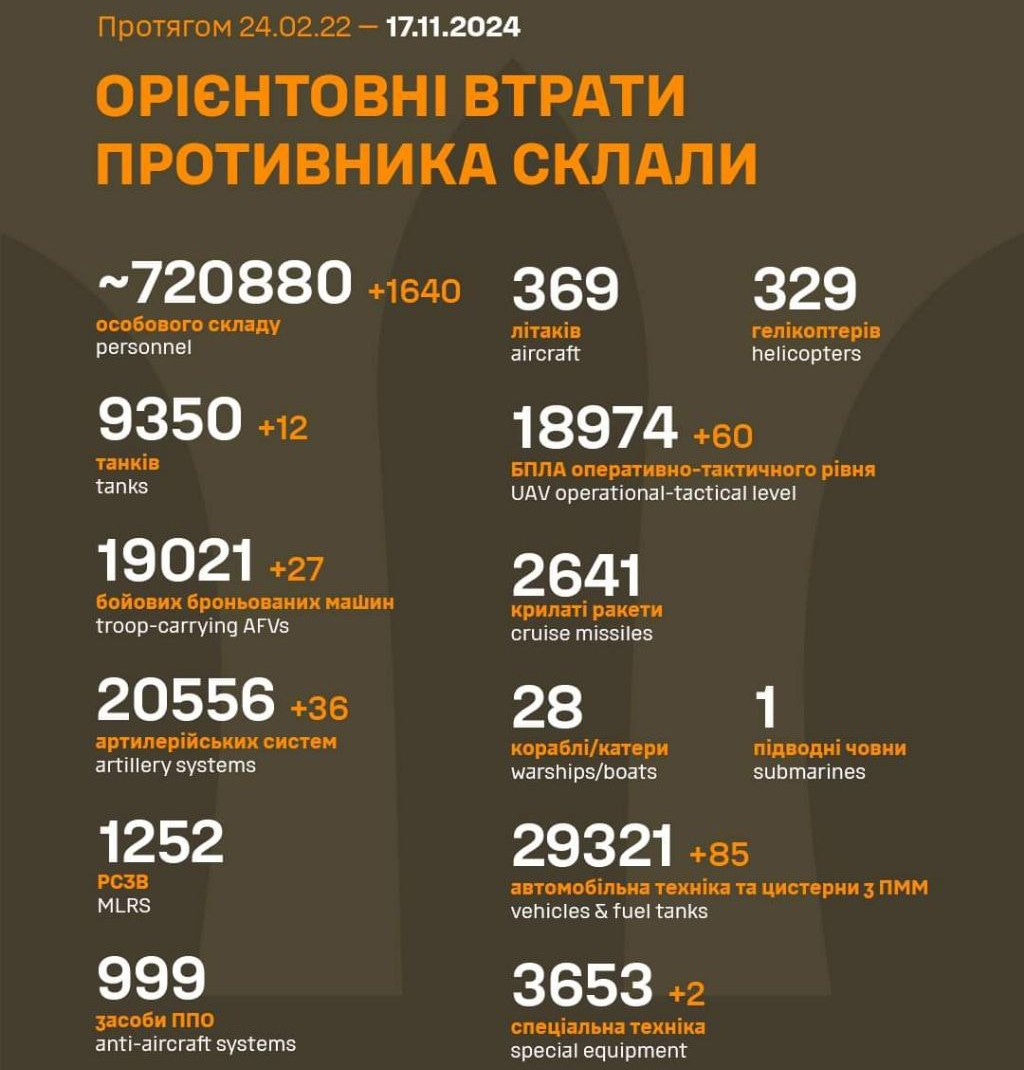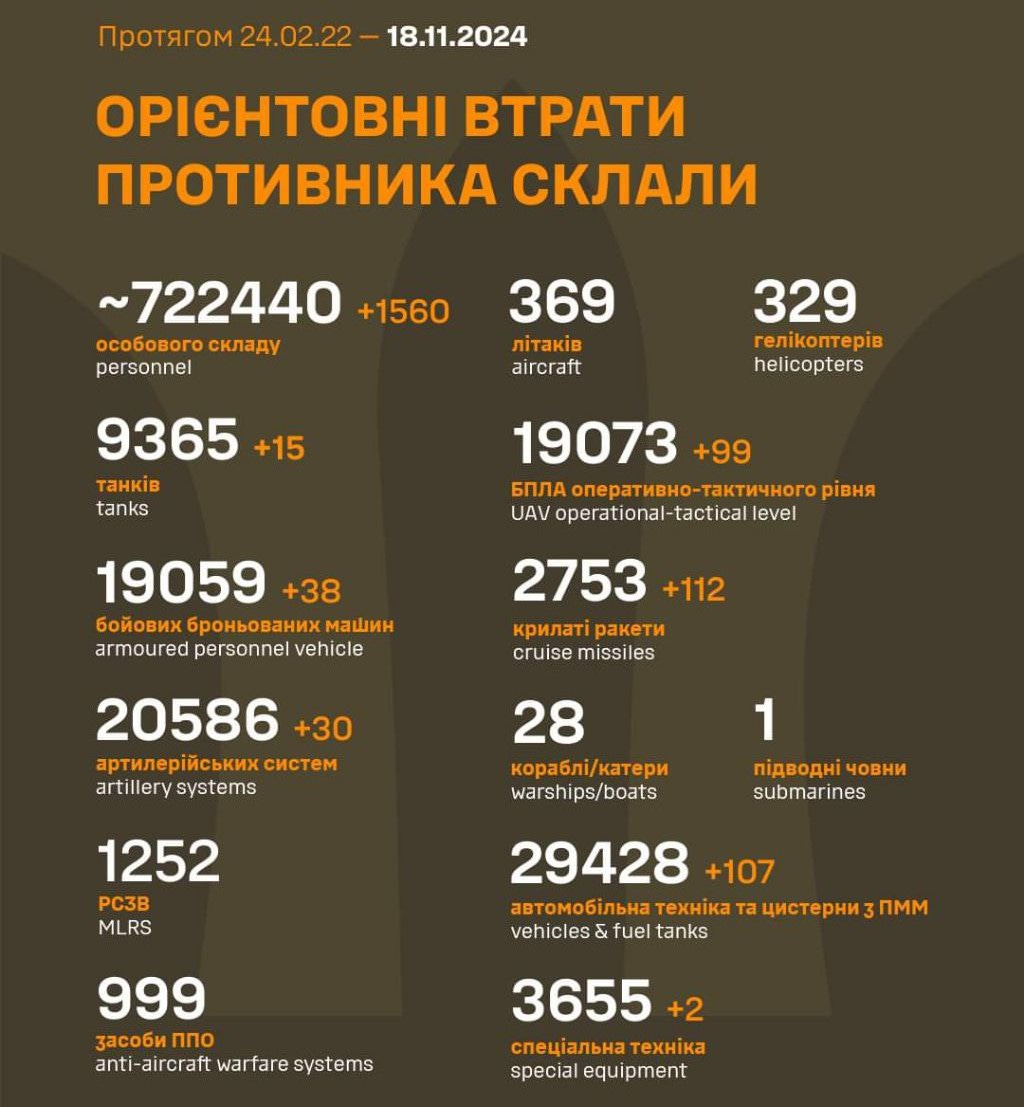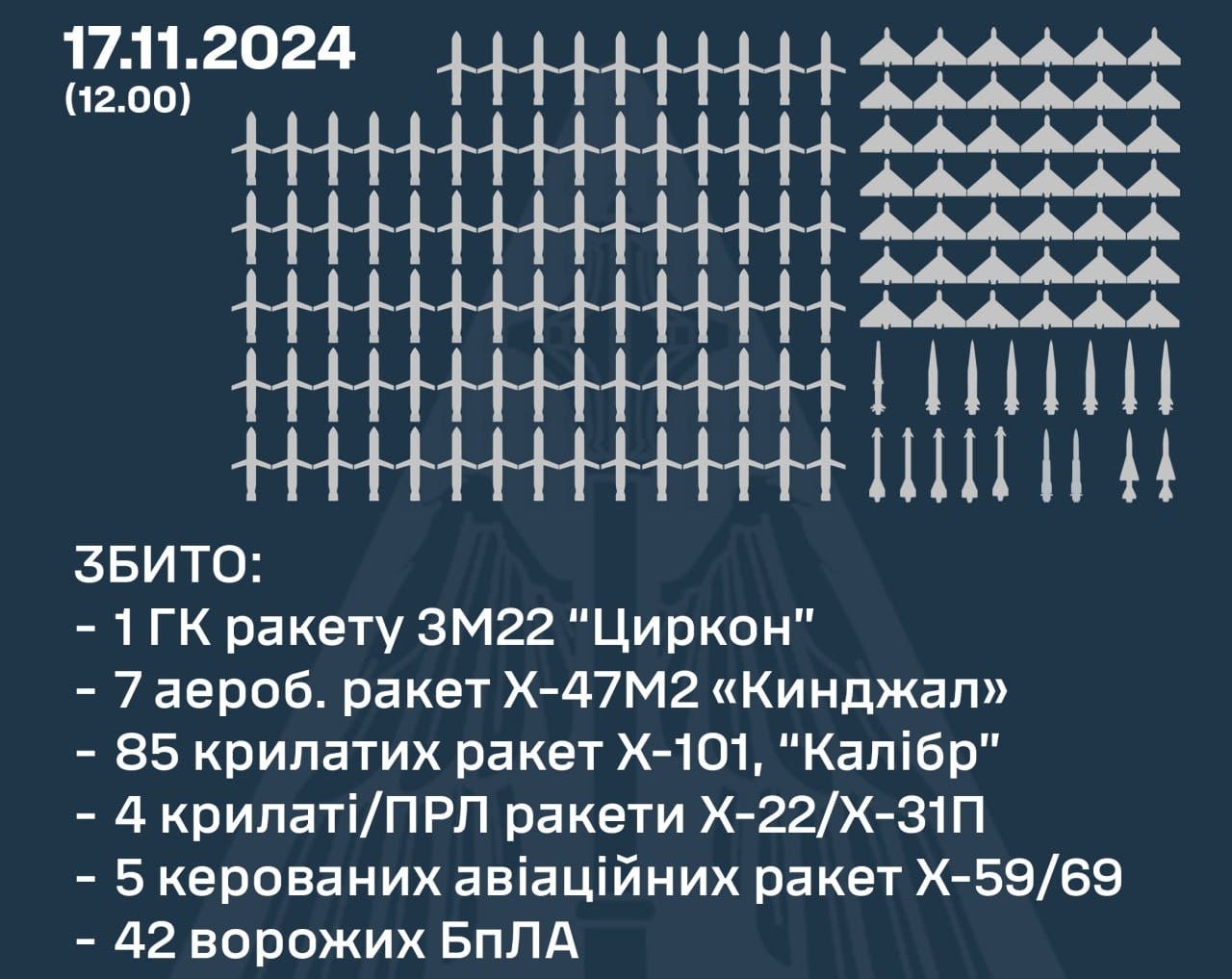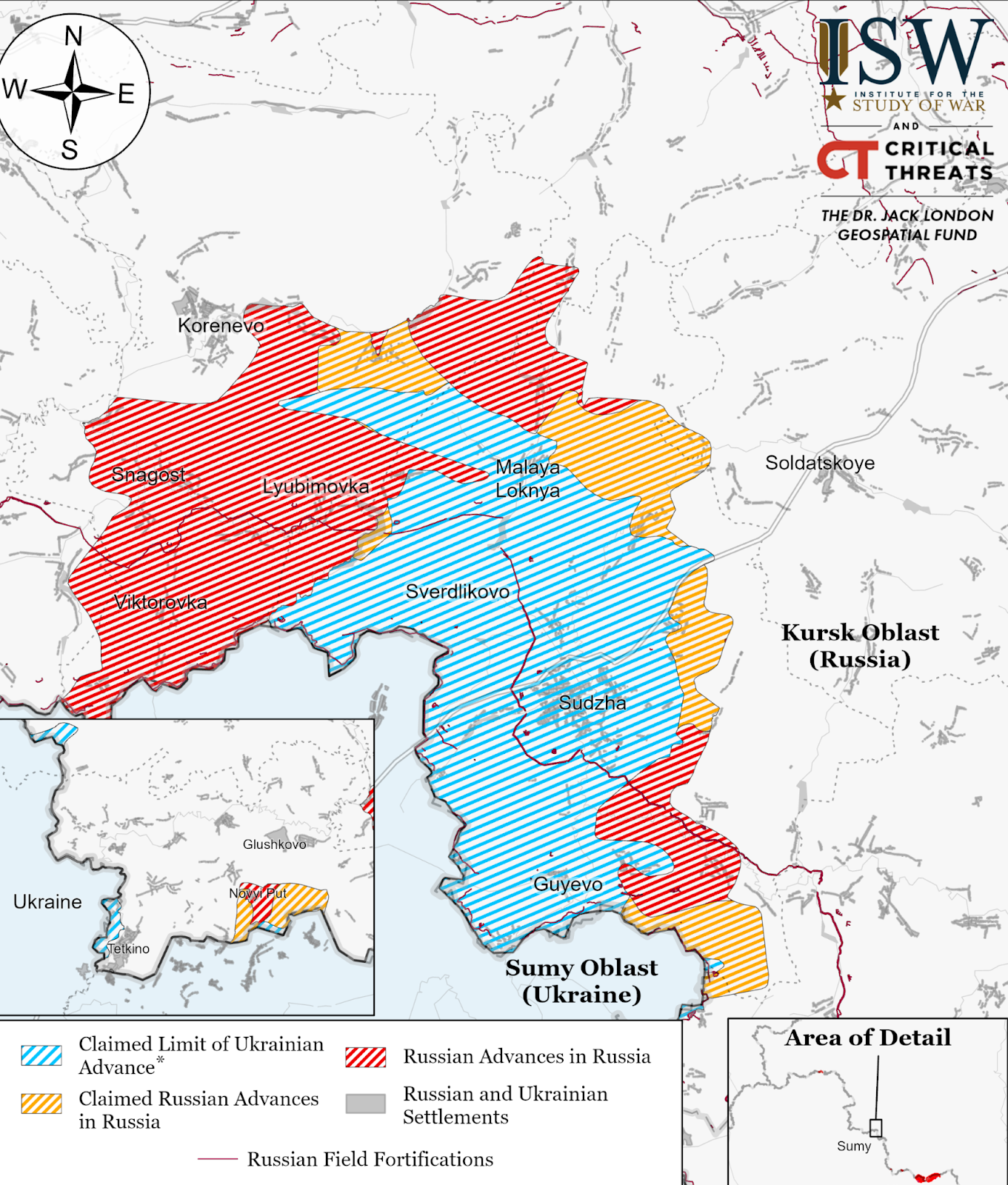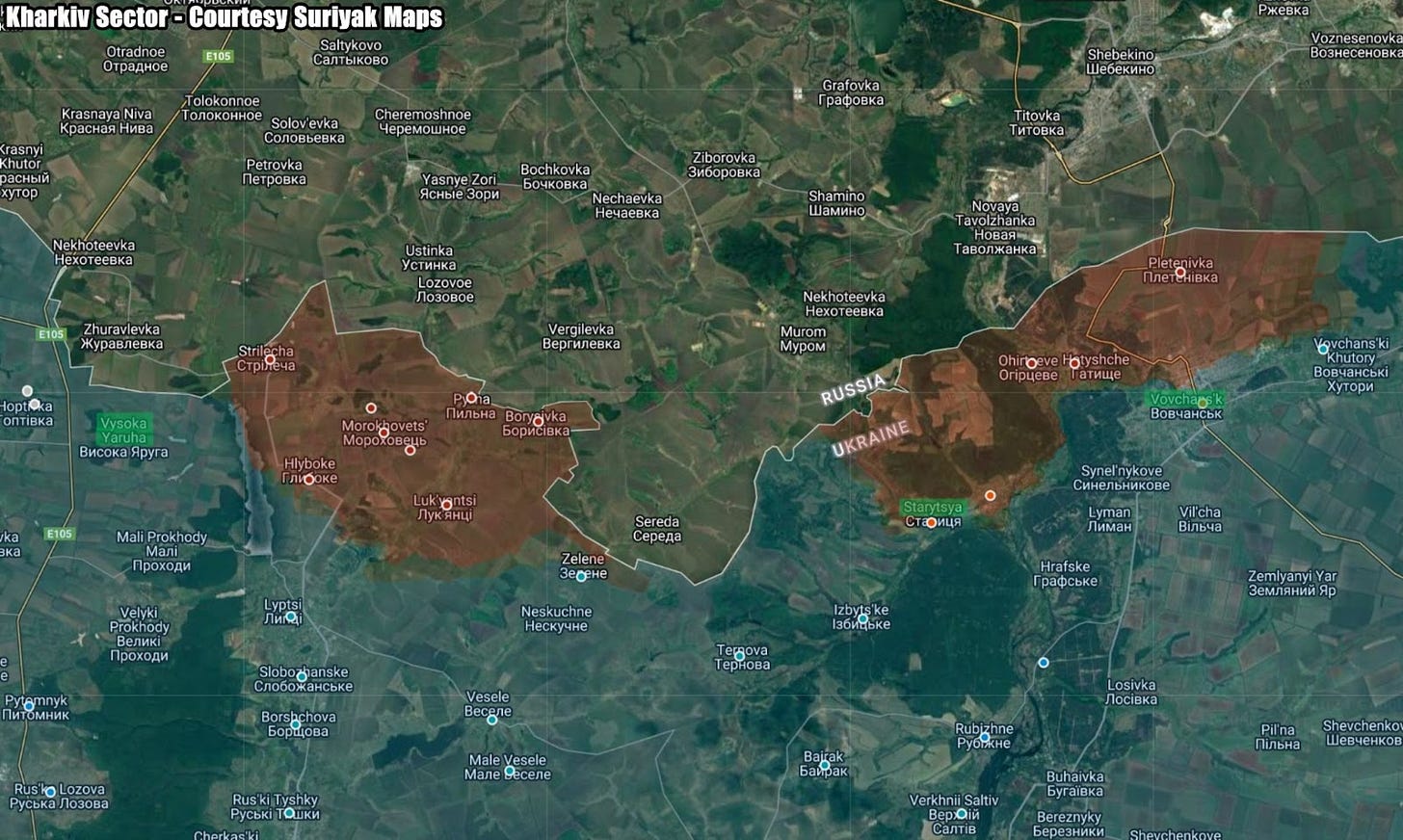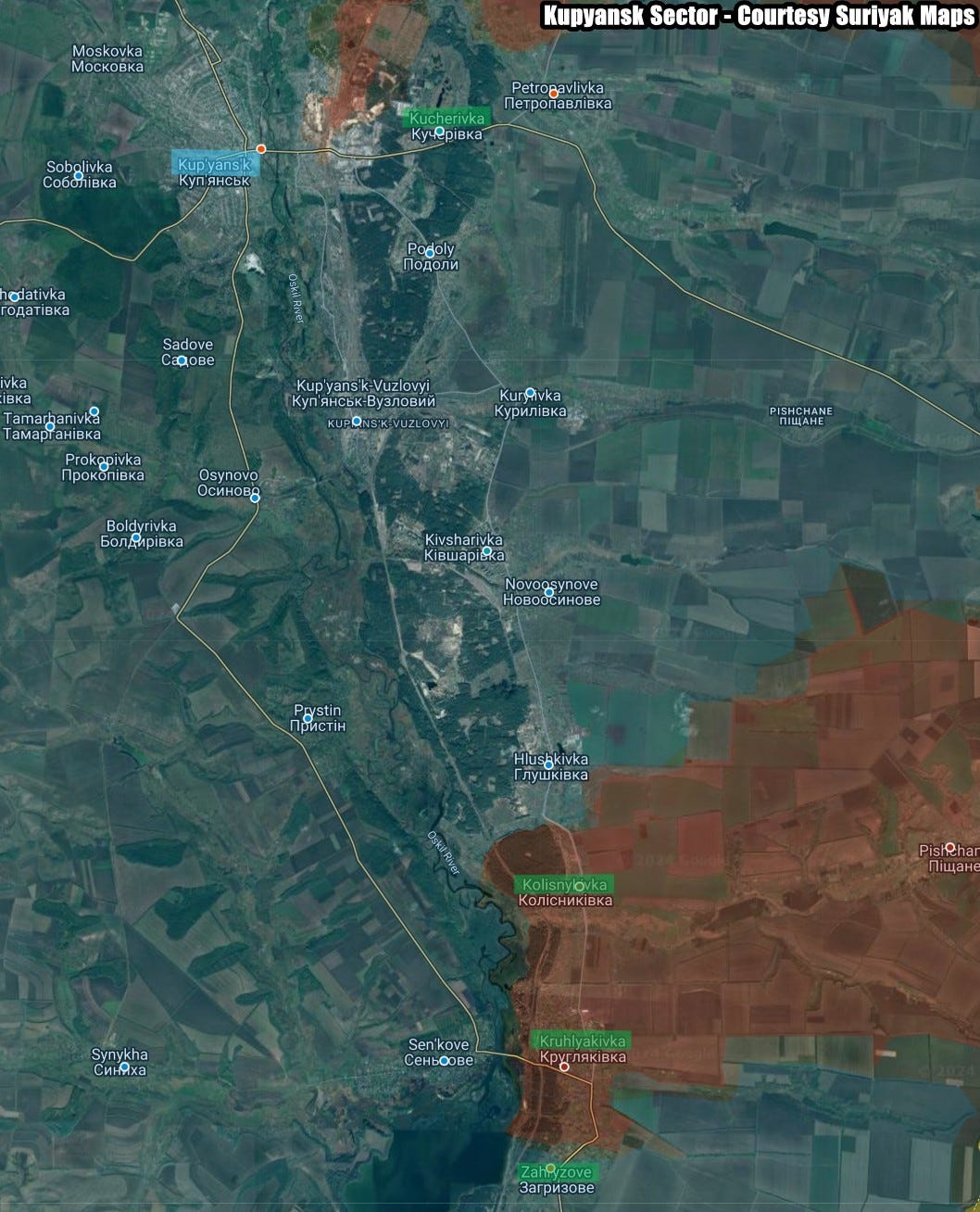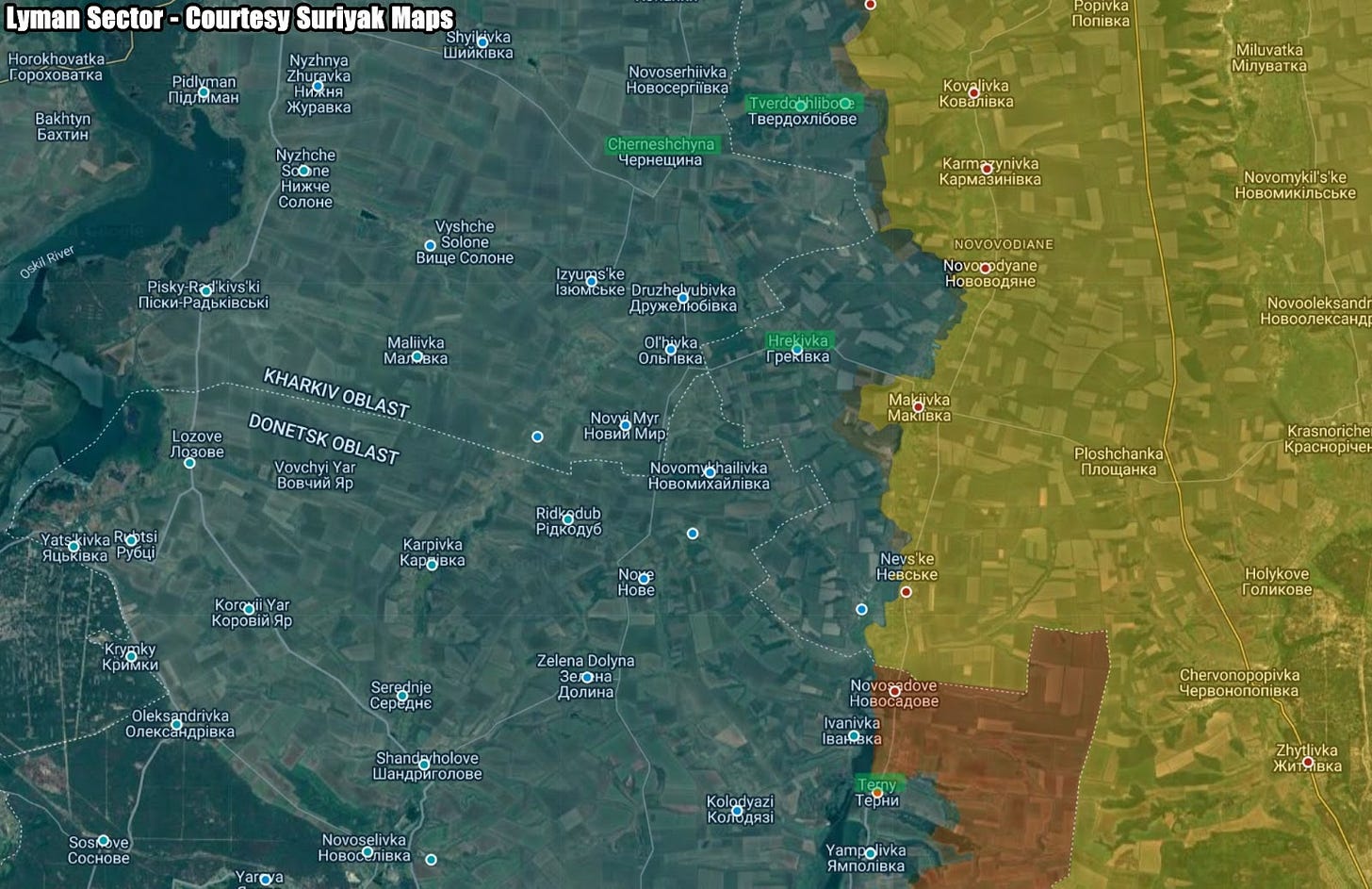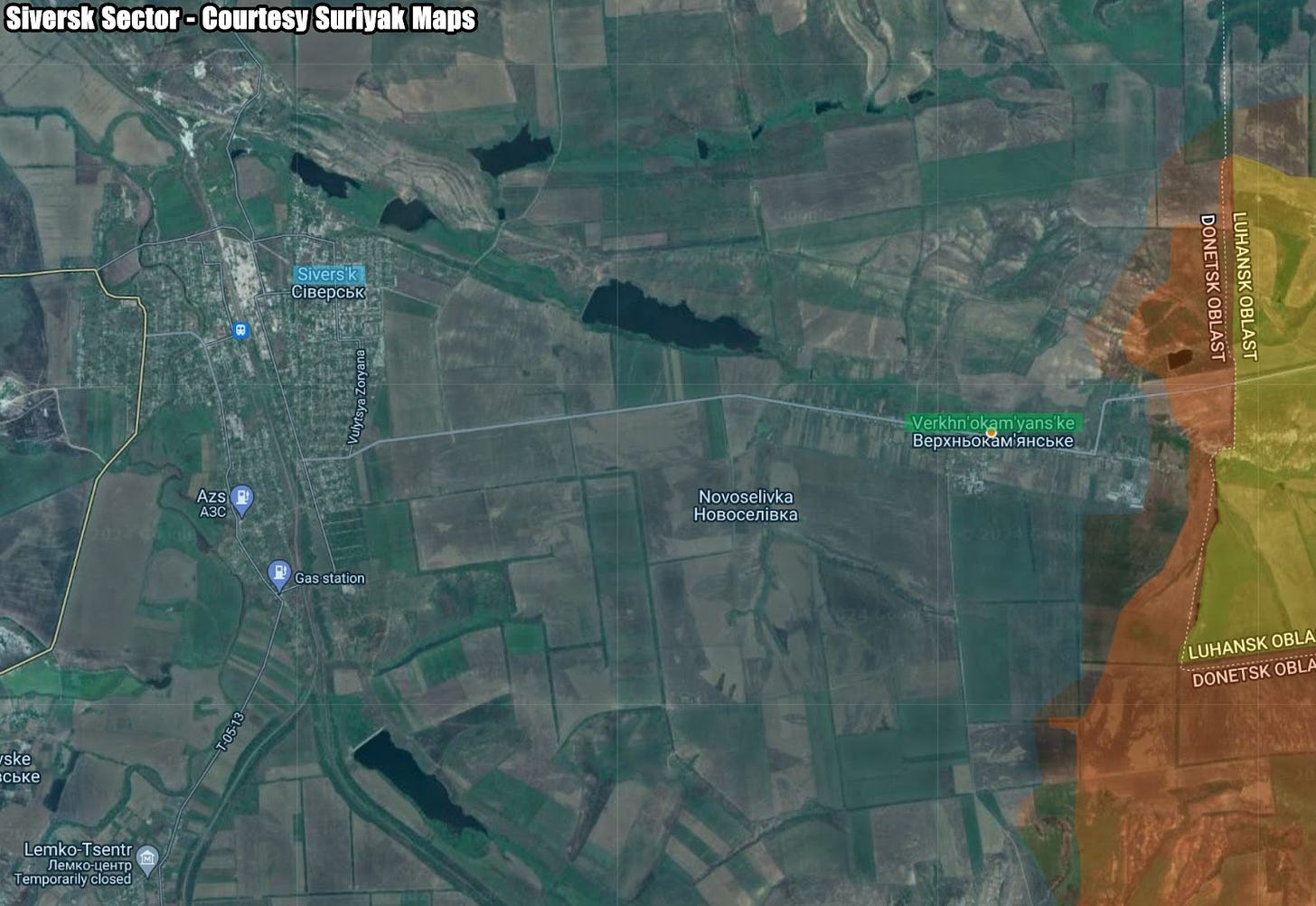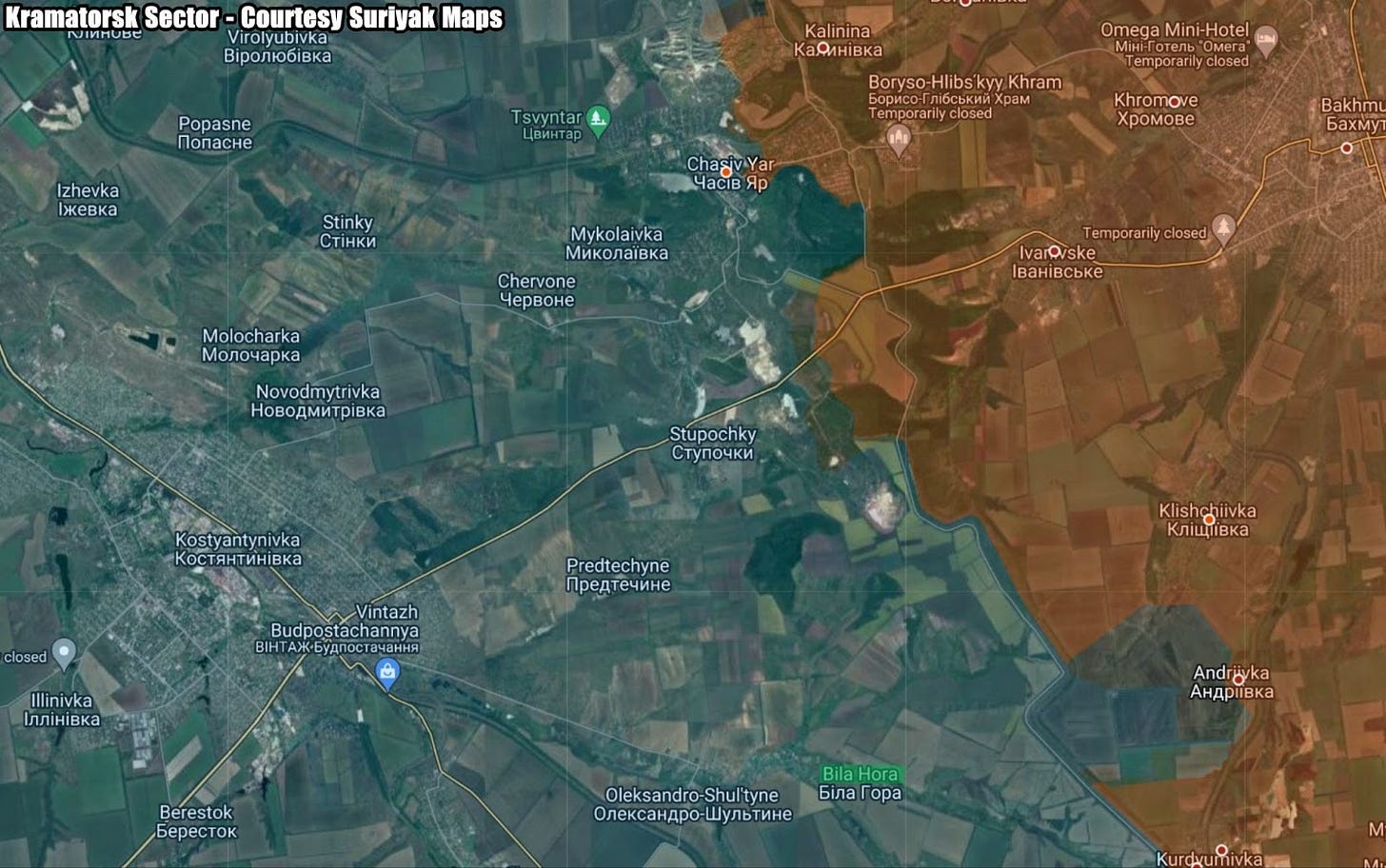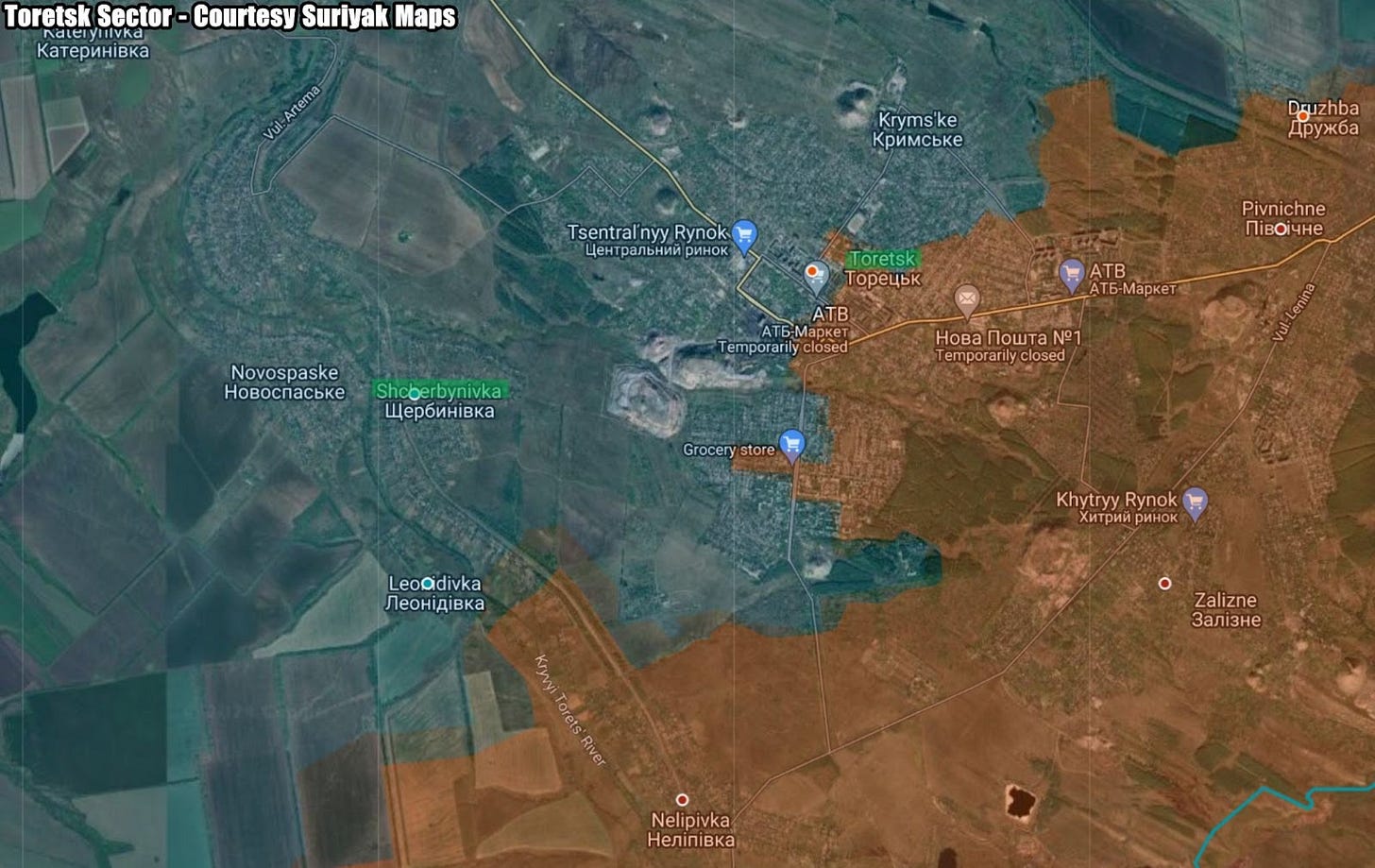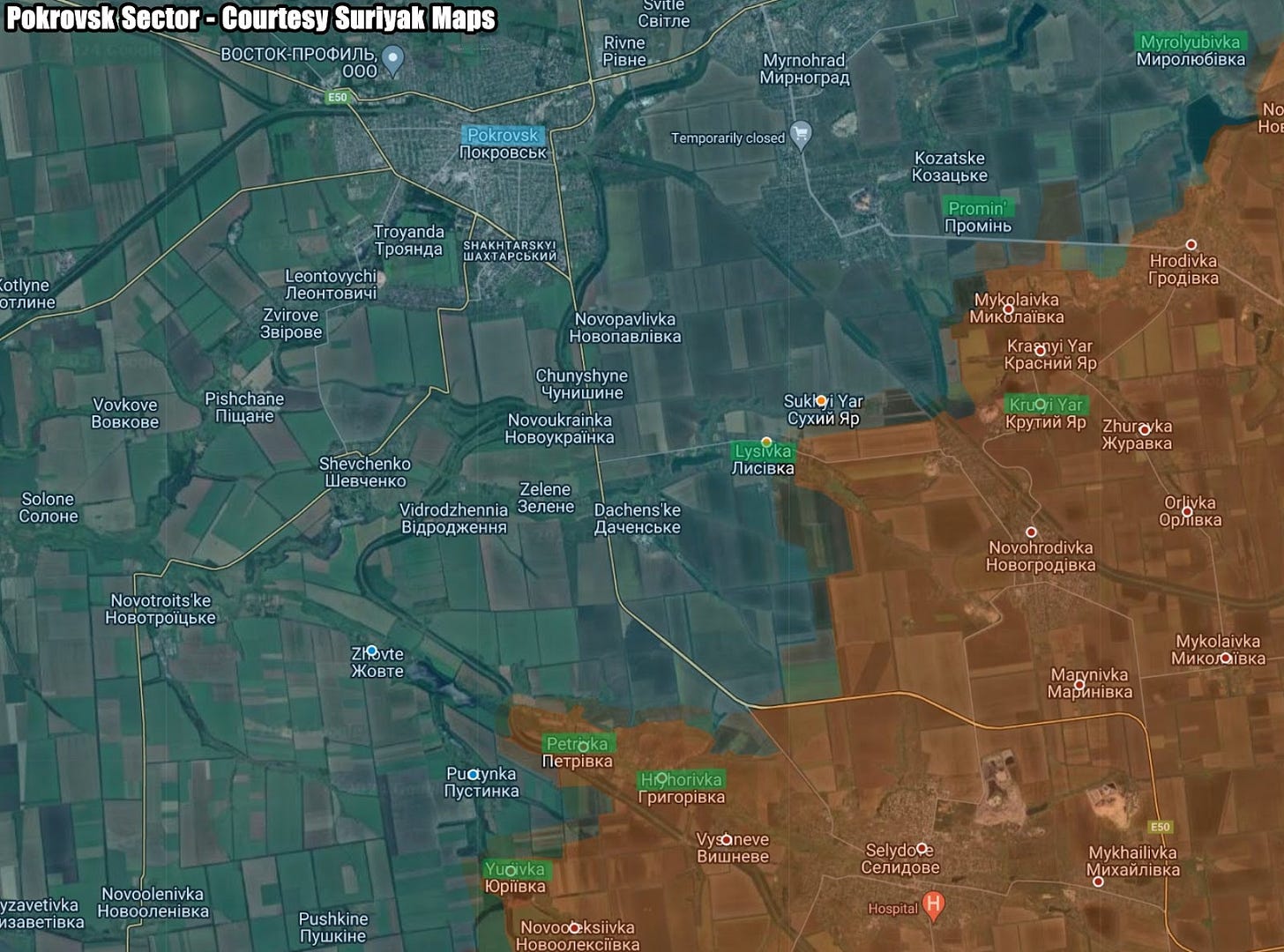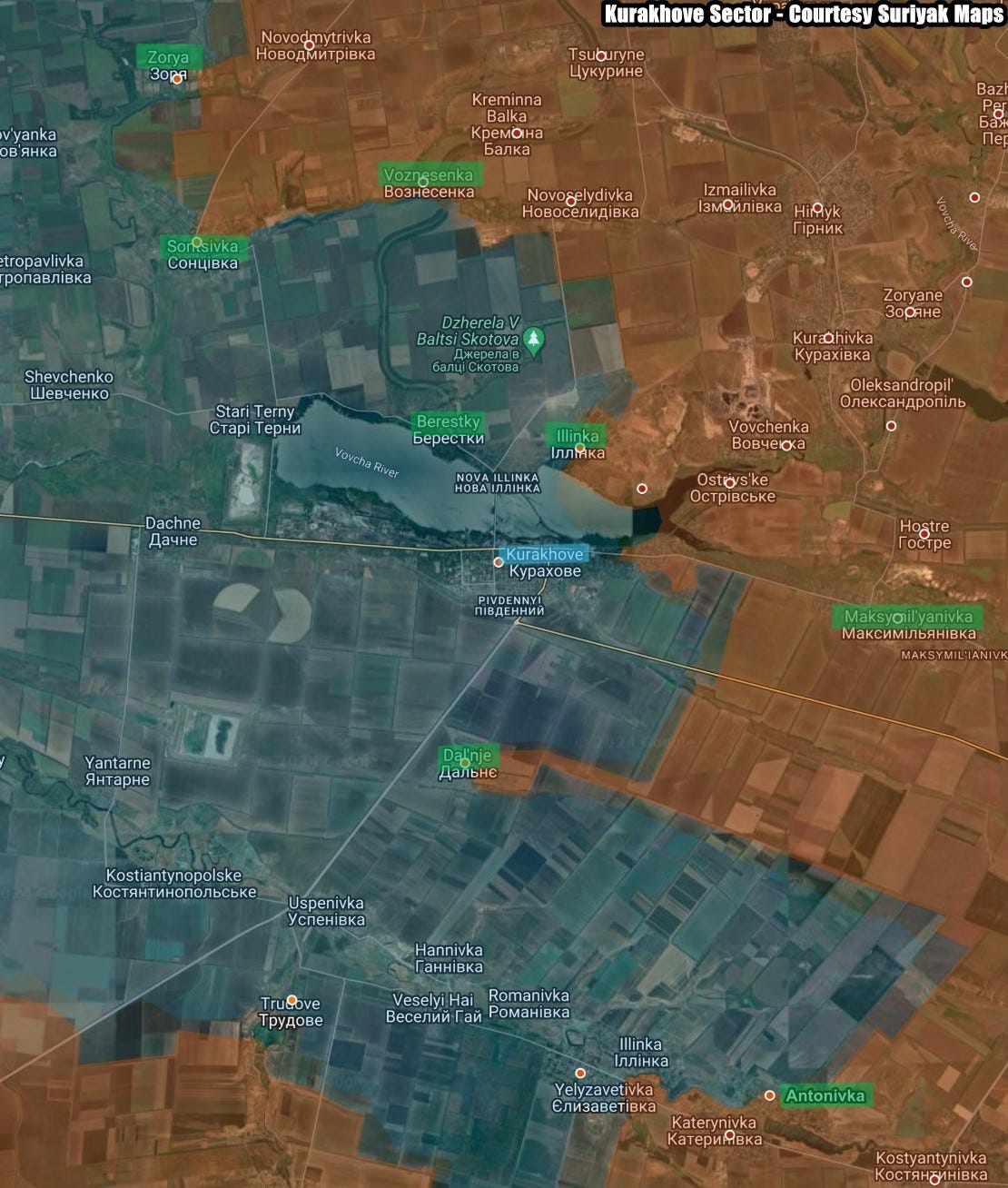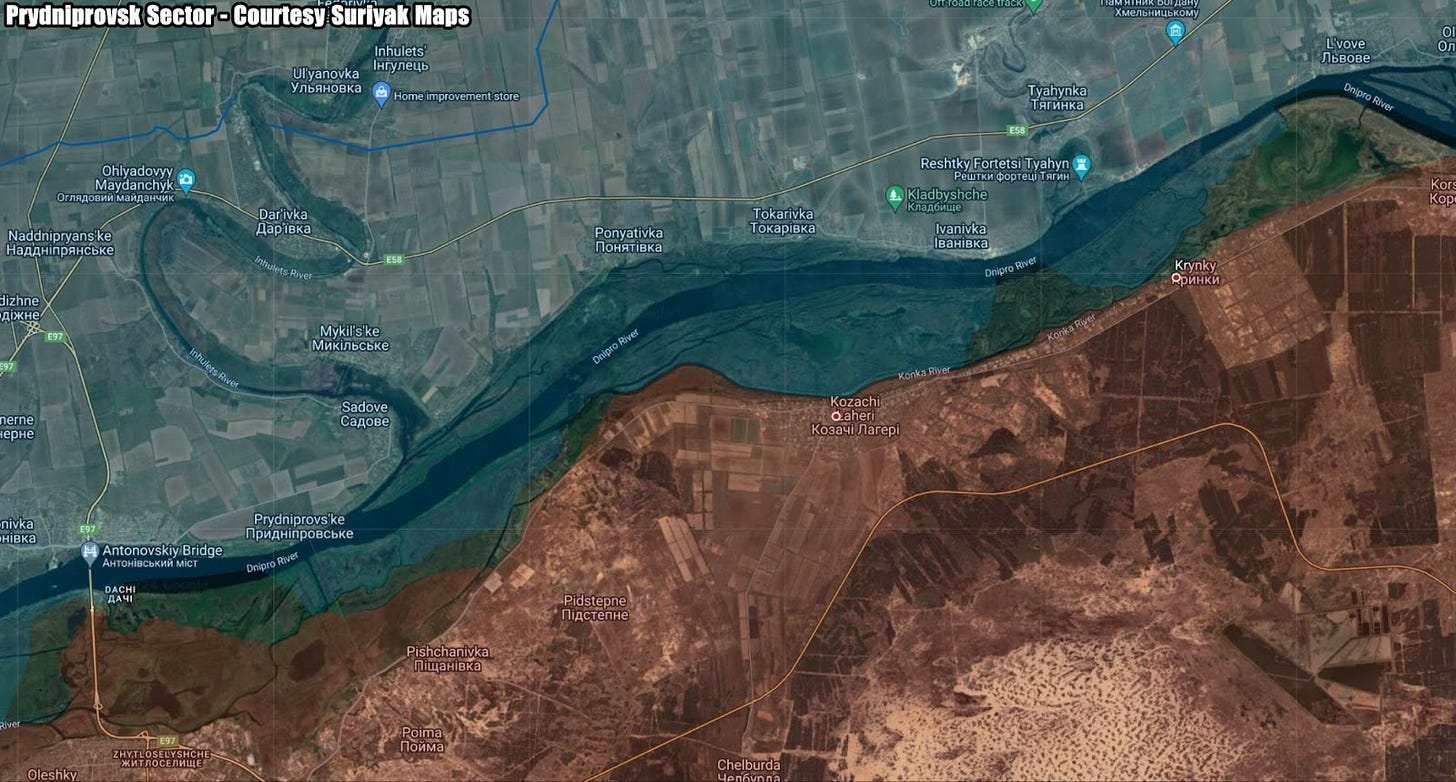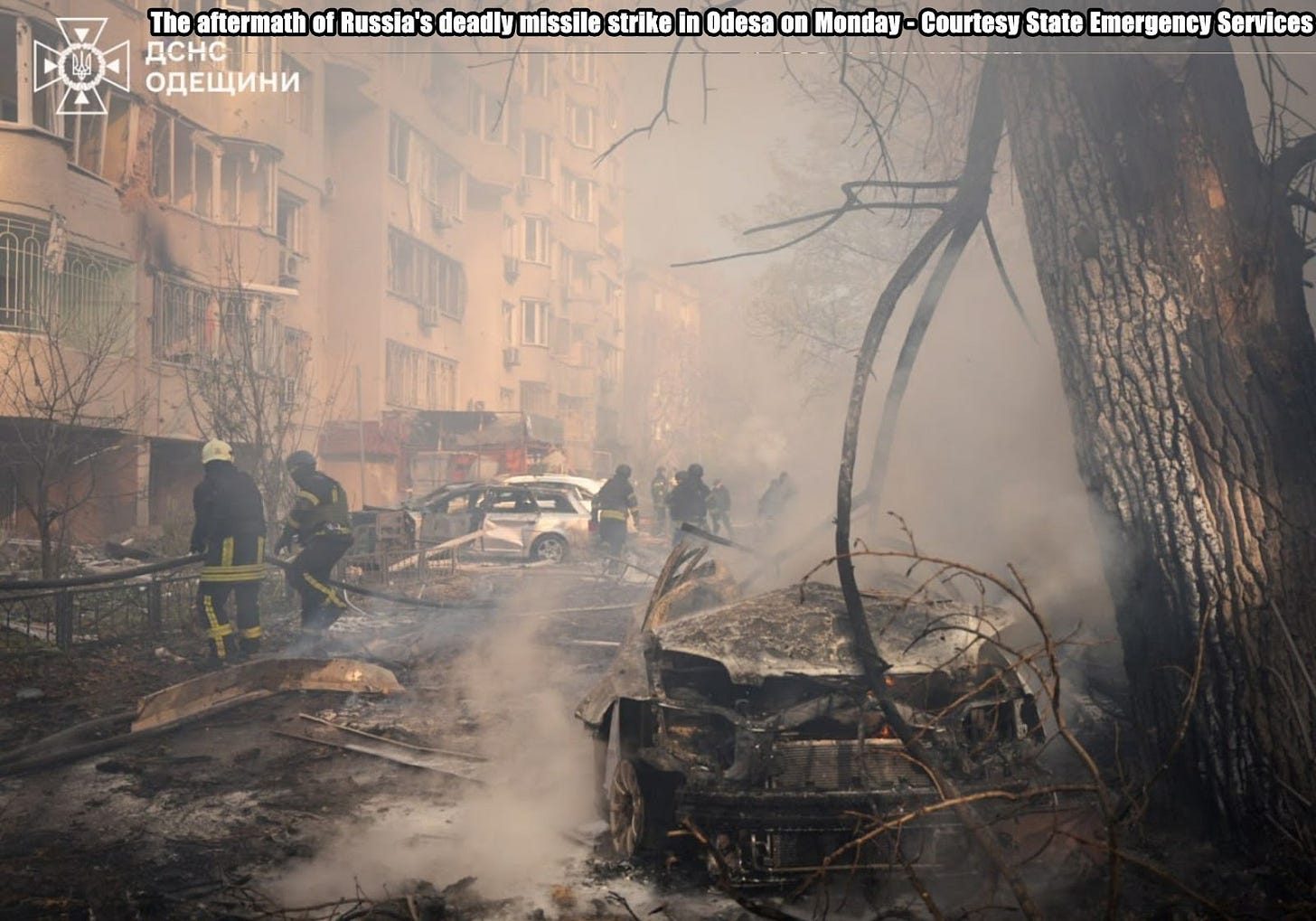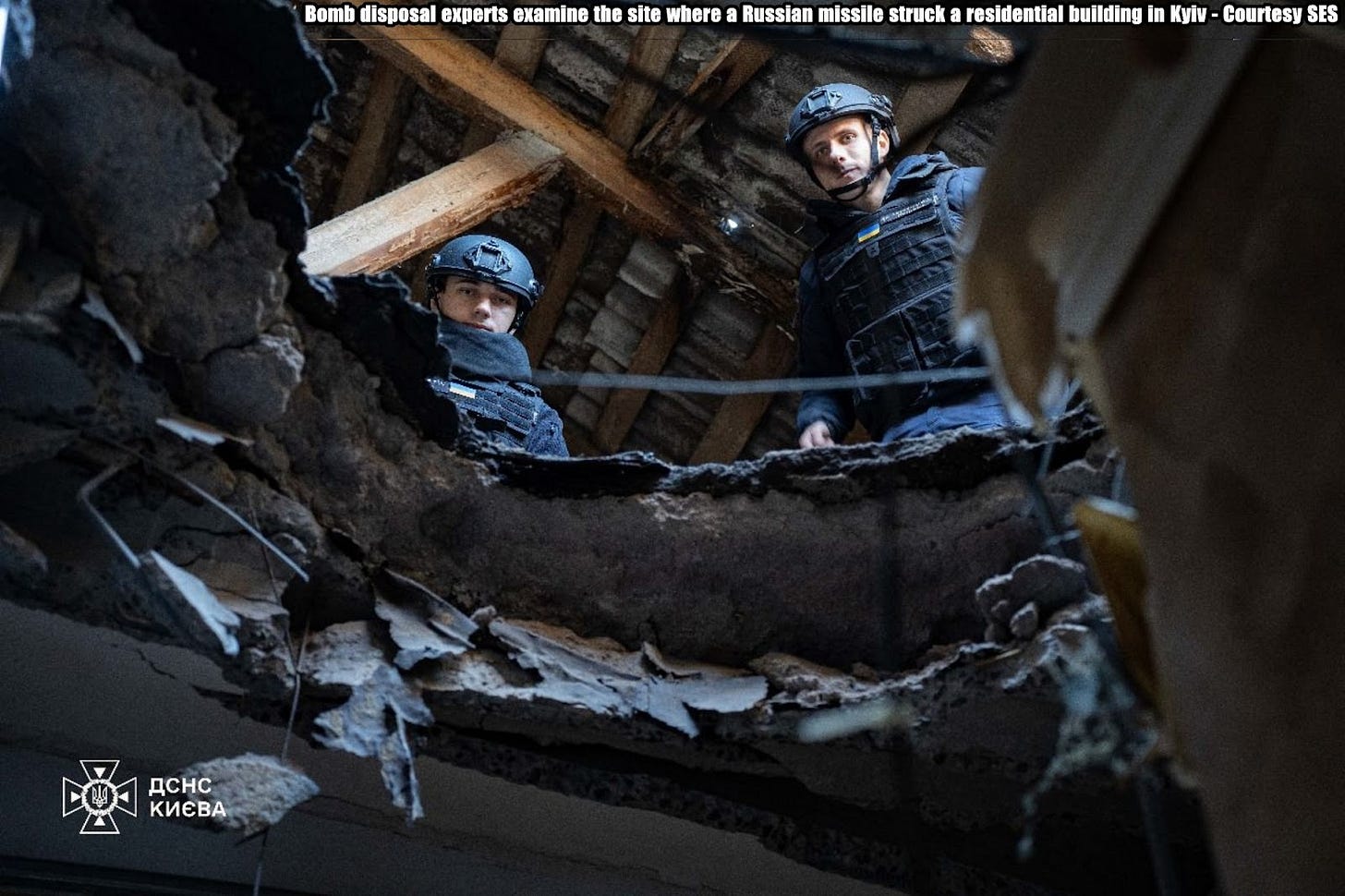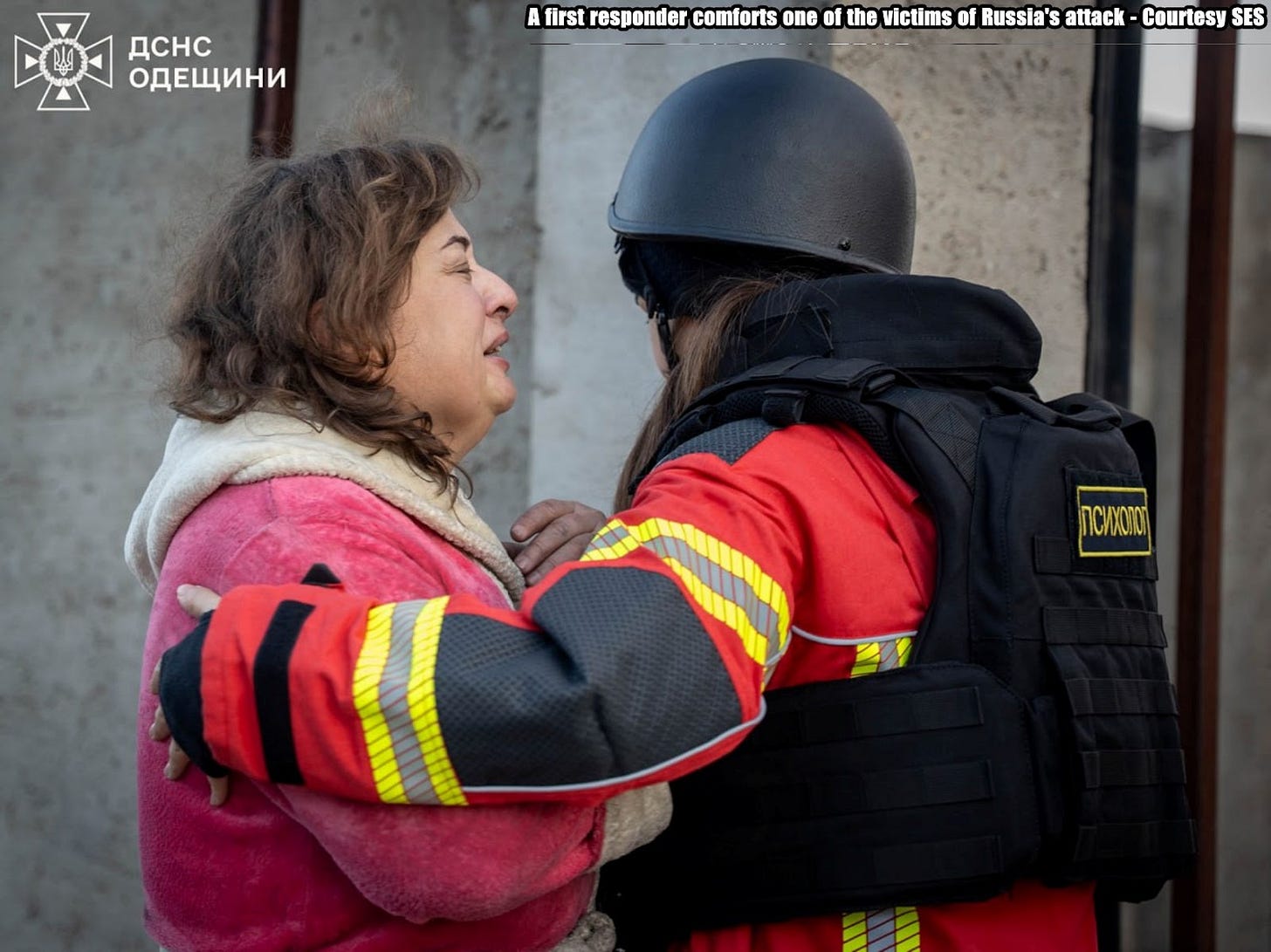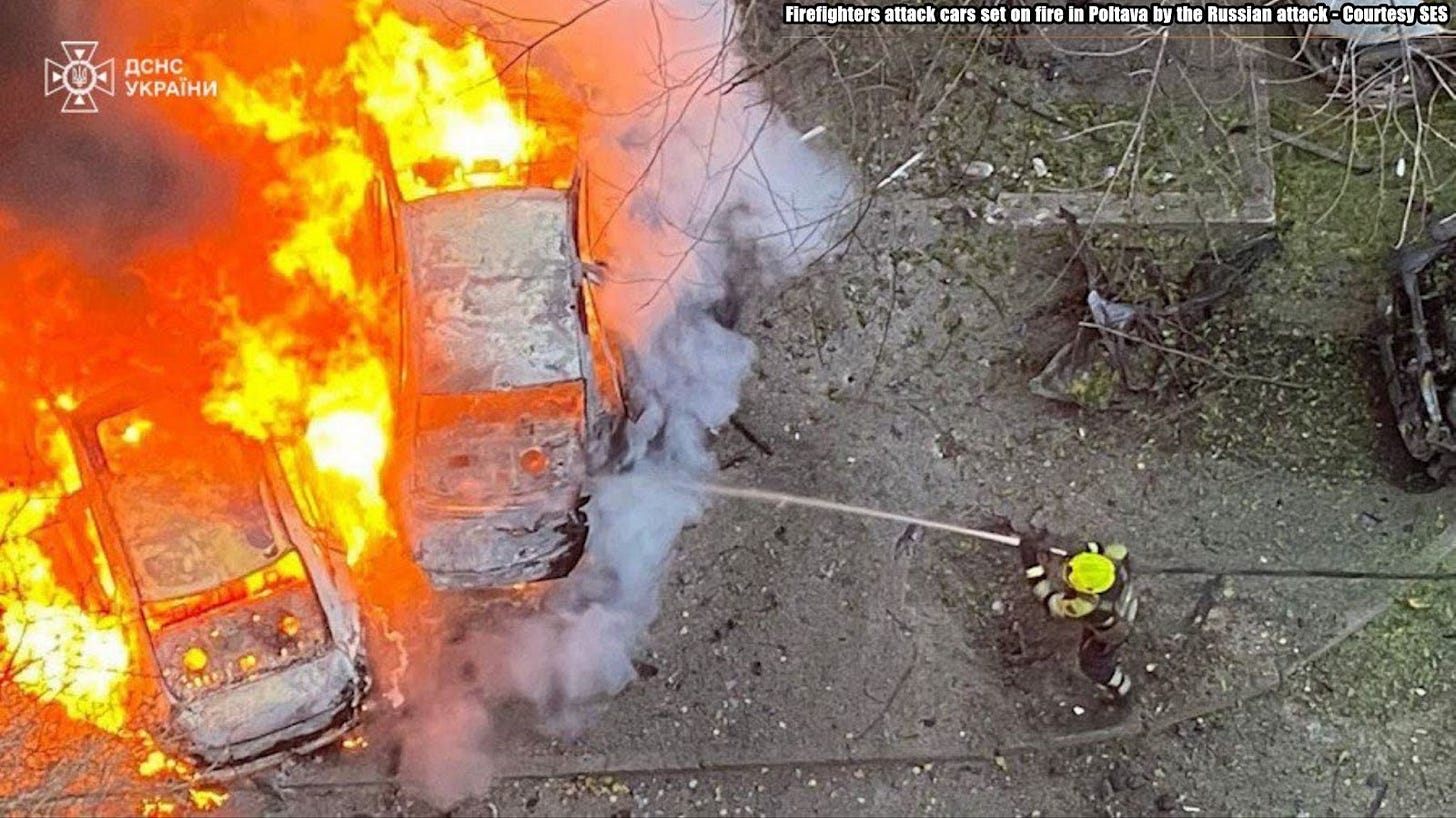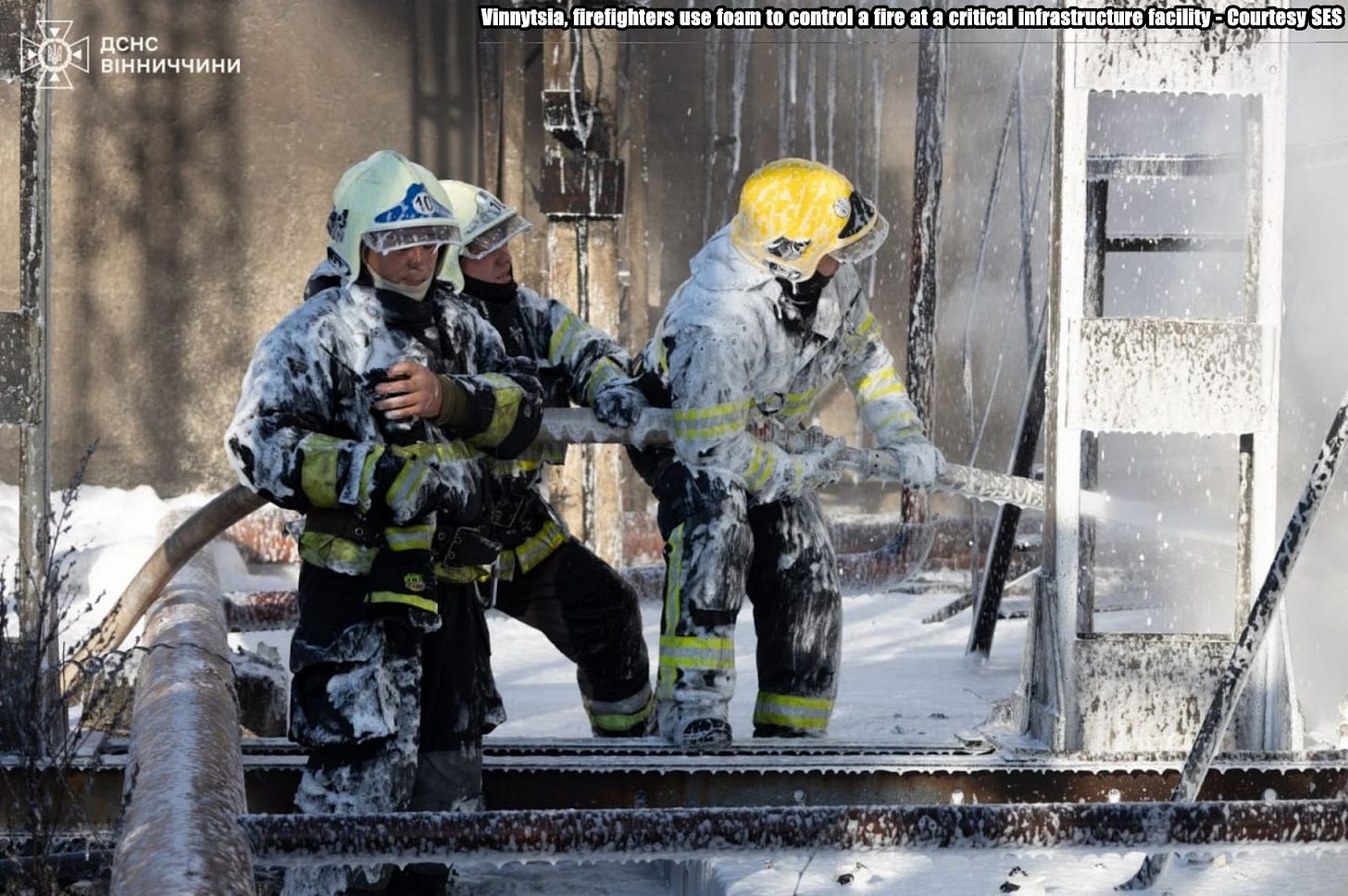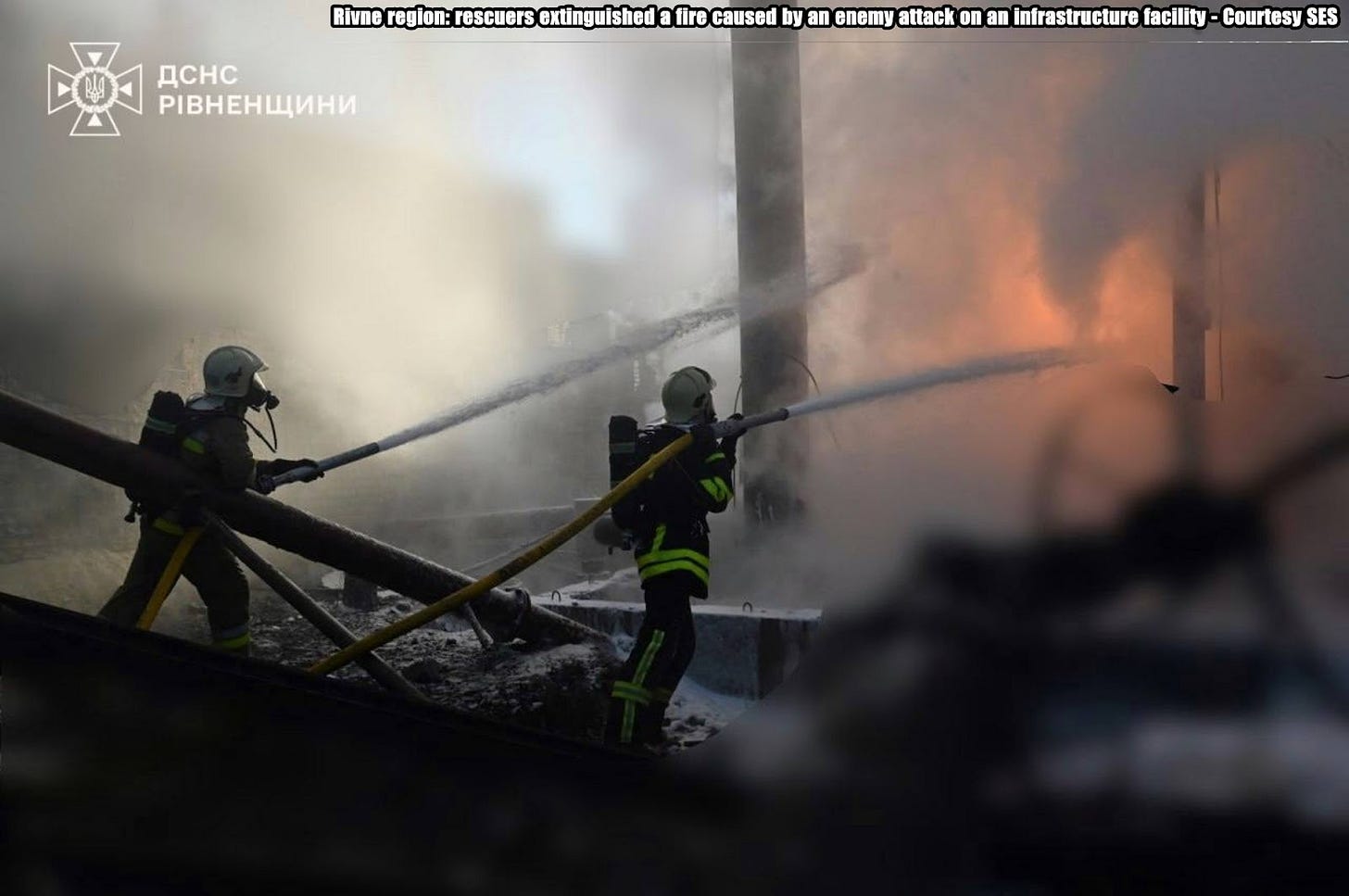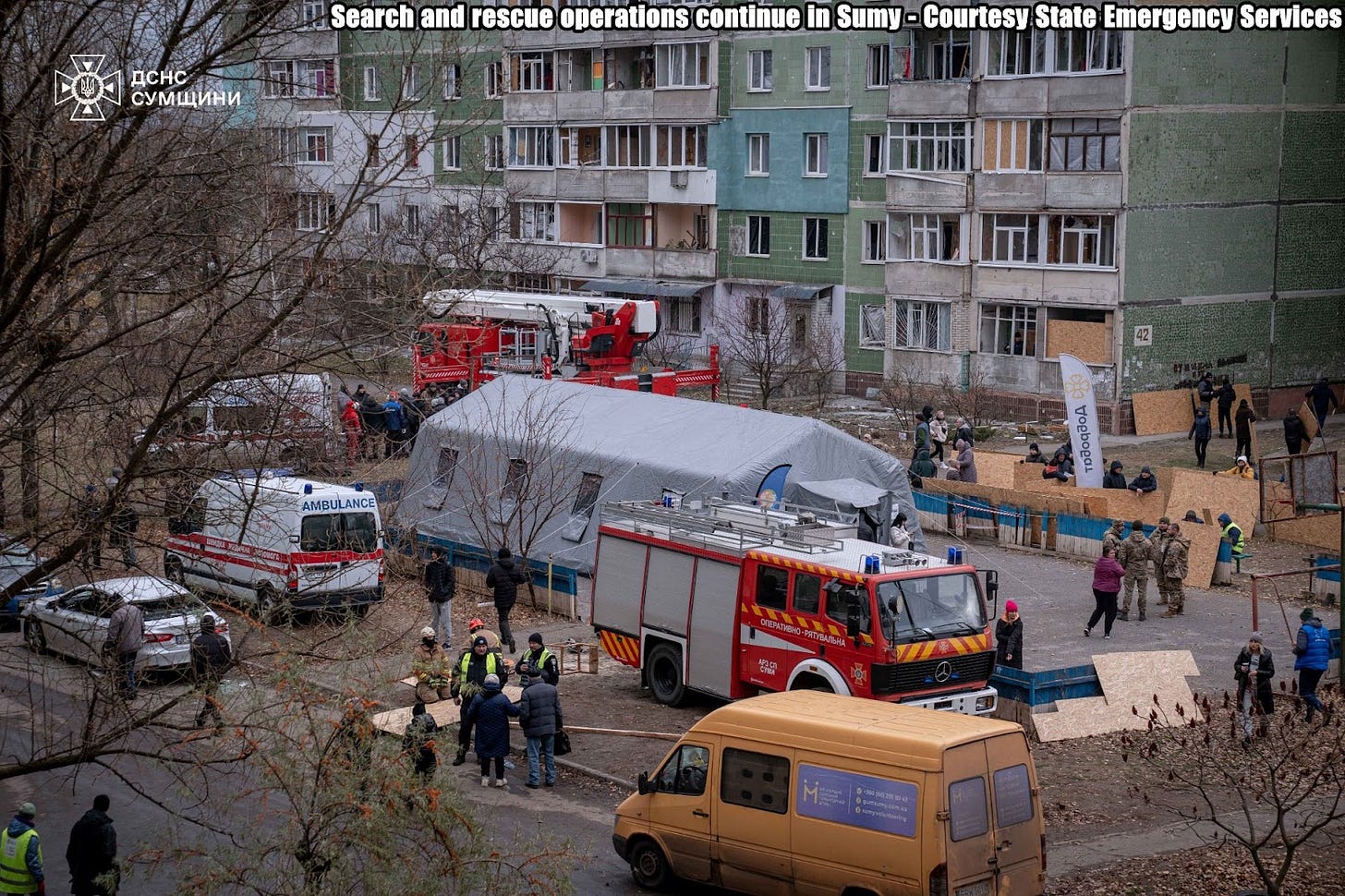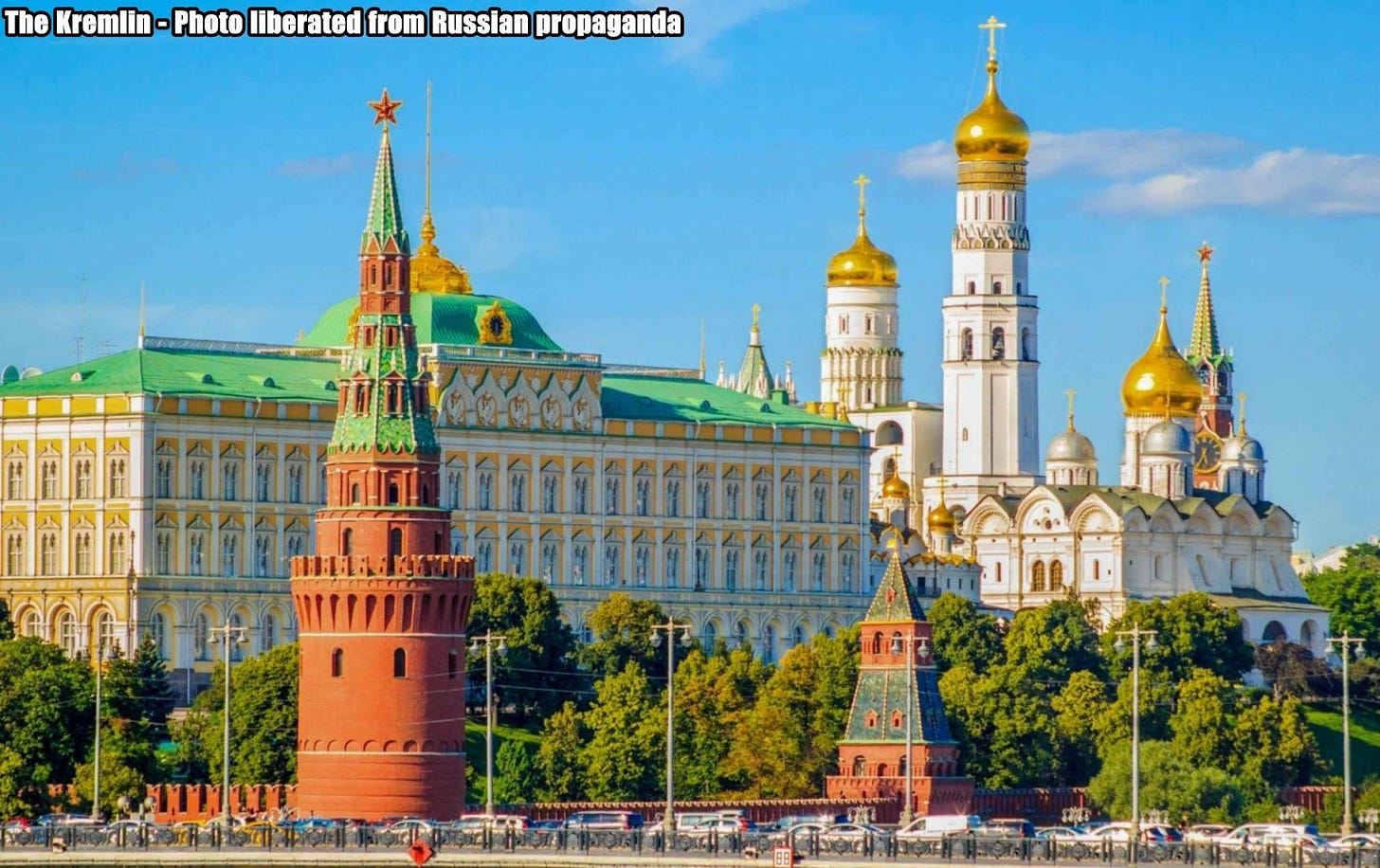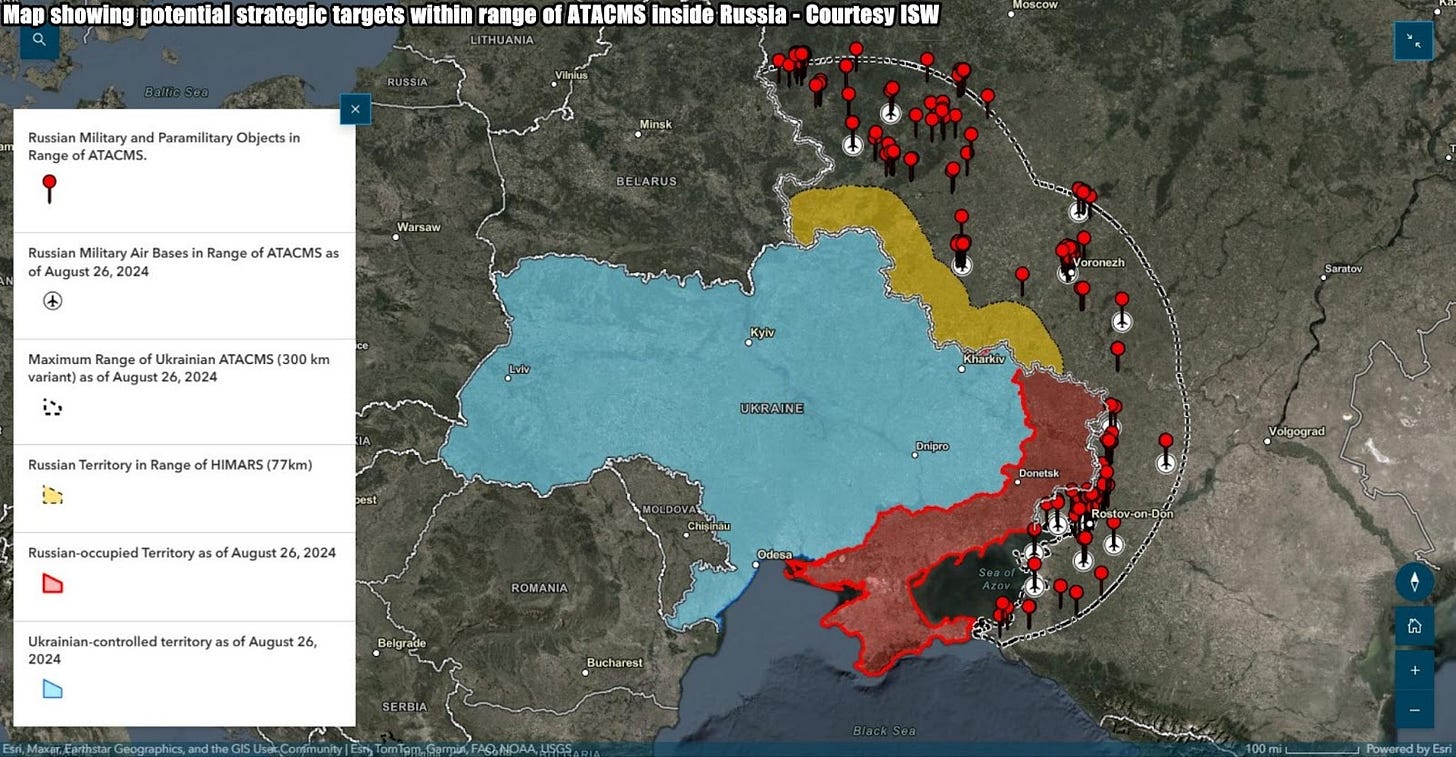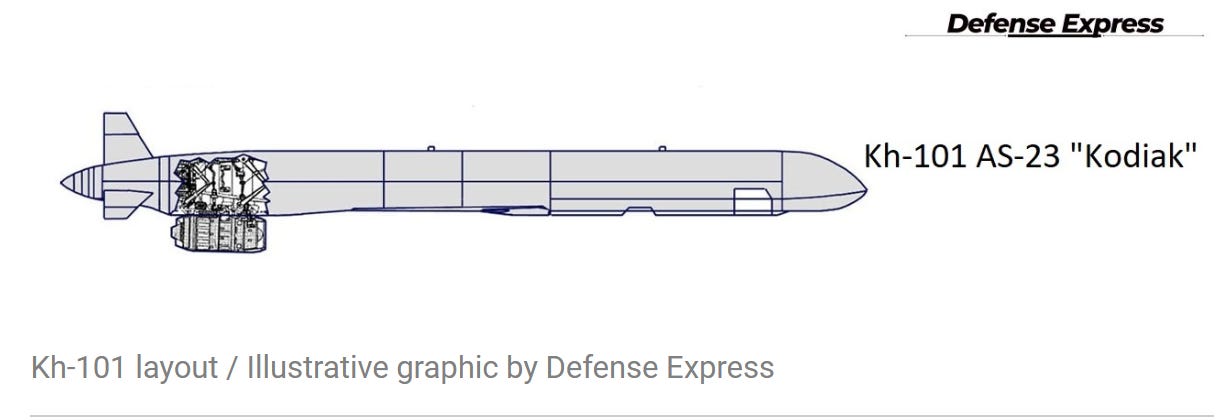Slava Ukraini! In early 2022 I began a Telegram channel aggregating news from a number of sources daily on the war in Ukraine. In June 2023 I began providing a daily draft for the Ukraine War Brief Podcast collecting news from over 70 sources daily, much of which formed the basis of the script. While the Podcast no longer exists I have continued to make this Brief available for my followers here on Substack for those who wish to keep up with the news from the war. A version of this Brief will also be made available on The People’s Media Substack for those who should choose to subscribe there.
All the latest news on the Russo-Ukraine War 6 days per week
ALONG THE CONTACT LINE
GSAFU Morning Report
GSAFU Morning Report
The General Staff of the Armed Forces of Ukraine in its Operational Information update at 22:00 on Nov 17 stated that day 998 of the full-scale invasion of the Russian Federation against Ukraine was about to begin.
During the past two days, 266 combat engagements took place. Over the past 48 hours, the enemy carried out 2 missile strike, 117 air strikes, 1,293 drone strikes and more than 7,100 artillery strikes across the positions of Ukrainian forces.
At the same time, Ukrainian soldiers continue to inflict losses in manpower and equipment on the occupying troops, exhausting the enemy along the entire front line and continue to disrupt the plans of Russian occupiers to advance deep into the territory of Ukraine.
-
Air Force Daily Report
On the night of November 17, 2024 (from 8:00 p.m. on November 16), the Russian occupiers launched a massive combined attack on the energy sector facilities of Ukraine with various types of air-, land-, and sea-based missiles, as well as "Shahed" type UAVs.
In general, according to preliminary data, the radio engineering troops of the Air Force of the Armed Forces of Ukraine detected and escorted 210 enemy air targets — 120 missiles and 90 UAVs.
By types:
- 1 hypersonic cruise missile 3M22 "Zirkon";
- 8 Kh-47M2 "Kinzhal" aeroballistic missiles;
- 101 Kh-101 Kalibr cruise missiles;
- 1 "Iskander-M" ballistic missile;
- 4 Kh-22/Kh-31P cruise/anti-radiation missiles;
- 5 Kh-59/Kh-69 guided air missiles;
- 90 strike UAVs/drones of an unspecified type.
The enemy involved 7 Tu-160 and 16 Tu-95MS strategic bombers, 2 Tu-22M3 long-range bombers, 5 Su-34 fighter-bombers, 4 Su-27 fighters, 10 MiG-31K fighters, 4 winged aircraft carriers to the air attack. rockets
During the night, all available forces and means of air defense worked along the tracking route of missiles and drones. Aviation, anti-aircraft missile units, electronic warfare equipment and mobile fire groups of the Air Force and the Defense Forces of Ukraine were involved.
According to preliminary data, as of 12:00 p.m. there is information about the downing of 144 aerial targets — 102 missiles and 42 UAVs):
- 1 hypersonic cruise missile 3M22 "Zirkon";
- 7 Kh-47M2 "Kinzhal" aeroballistic missiles;
- 85 Kh-101 Kalibr cruise missiles;
- 4 Kh-22/Kh-31P cruise/anti-radio missiles;
- 5 Kh-59/69 guided air missiles;
- 42 attack UAVs/drones of an unknown type (from Kursk, Orel, Primorsko-Akhtarsk regions - Russian Federation).
As a result of active countermeasures by the Defense Forces, 41 enemy UAVs were lost in location in different regions of Ukraine, two more UAVs flew towards Russia and the temporarily occupied territory.
Air defense worked in almost all regions of Ukraine — in Kyiv, Cherkasy, Kirovohrad, Chernihiv, Sumy, Kharkiv, Poltava, Odesa, Mykolaiv, Zaporizhia, Dnipropetrovsk, Zhytomyr, Vinnytsia, Khmelnytskyi, Ternopil, Ivano-Frankivsk, Rivne, Volyn and Lviv regions.
On the night of November 18, 2024 (from 7:30 p.m. on Nov 17), the enemy attacked Sumy Oblast with two Iskander-M ballistic missiles from the Voronezh Region. and guided air missile Kh-59 from the airspace of the Kursk region. - Russian Federation Also, from Kurshchyna, the enemy launched 11 attack UAVs of the "Shahed" type and unmanned aerial vehicles of an unknown type.
Eight attack drones were shot down by air defence in Poltava, Kharkiv, Cherkasy, Chernihiv and Kyiv regions. Three unmanned aerial vehicles - lost in location.
The Russian Border Incursion
The Institute for the Study of War (ISW), a US based think tank, in its Nov 17 Russian Offensive Campaign Assessment reported that Russian forces continued offensive operations in the main Ukrainian salient in Kursk Oblast on Nov 16 and 17 but did not advance. The Russian Ministry of Defense (MoD) claimed on Nov 17 that Russian forces successfully encircled Ukrainian forces near the Olgovka forest (east of Korenevo) and struck Ukrainian forces attempting to break out of the encirclement. A Russian milblogger claimed on Nov 16 that Russian forces recently advanced east of Korenevo near Kremyanoye; southeast of Korenevo near Darino and Novoivanovka; and south of Sudzha near Kurilovka and Plekhovo. ISW has not observed confirmation of these claims.
Elements of the Russian 1434th "Akhmat-Chechnya" Regiment (likely a mobilized regiment) are reportedly operating in the Kursk direction; elements of the Russian 83rd Airborne (VDV) Brigade are reportedly operating near the Snagost river dam (south of Korenevo); and elements of the Russian 106th VDV Division are reportedly operating near Darino (southeast of Korenevo).
Ukrainian military observer Kostyantyn Mashovets stated on Nov17 that the Russian military redeployed elements of the 69th Separate Covering Brigade (35th Combined Arms Army [CAA], Eastern Military District [EMD]) from the Hulyaipole direction to Kursk Oblast at the end of September to beginning of October. ISW observed reports on Nov 16 that elements of the 69th Covering Brigade were operating in the south Donetsk (Kurakhove-Vuhledar) direction, and the brigade may be split between various sectors of the front.
The Khortytsia operational-strategic group
(Responsible for the northeastern part of Ukraine. )
The Khortytsia operational-strategic group is responsible for the northeastern part of Ukraine.
Kharkiv Sector: Over the last day Ukrainian Defense Forces repelled 10 Russian attacks in the area of Vysoka Yaruha, Starytsya and Vovchansk.
Kupyansk Sector: Russian Forces carried out 10 offensive actions against Ukrainian defensive positions near Kucherivka, Kolisynivka, Kruhlyakivka and Zahryzove. 1 engagement continues.
Lyman Sector: Russian Forces carried out 7 offensive actions against Ukrainian defensive positions near Tverdokhlibove, Cherneshchyna, Hrekivka and Terny.
Siversk Sector: Russian forces carried out 1 offensive action near Verkhnokamyanske.
Kramatorsk Sector: Russian forces carried out 1 unsuccessful offensive action against Ukrainian defences in the vicinity of Bila Hora.
Toretsk Sector: Russian forces carried out 2 offensive actions with air support near Toretsk and Shcherbynivka.
The Tavria operational-strategic group
(Responsible for the central-eastern and southeastern part of Ukraine.)
Pokrovsk Sector : Russian forces carried out 28 offensive actions in the vicinity of Myrolyubivka, Promin, Krutyi Yar, Lysivka, Petrivka, Hryhorivka and Yuriivka.
Kurakhove Sector: The main thrust of Russian forces over the last day was in this district 35 offensive actions took place in the vicinity of Zorya, Voznesenka, Sontsivka, Berestky, Illinka, Maksymilyanivka, Dalnje and Antonivka. 15 engagements continue.
Vremivka Sector: Russian forces made 4 attempts to break through Ukrainian defences in the vicinity of Rozdolne and Shahktarske. 3 engagements continue.
Orikhiv Sector: In this sector, over the last day, Russian forces made 1 attempt to dislodge Ukrainian units from their positions near Novoandriivka.
The Odesa operational-strategic group
(Responsible for Kherson, Qırım, (also known as Crimea) and the Black Sea.)
Prydniprovsk Sector: In this sector, over the last day, there has been no significant change in the combat environment. Russian forces made 4 unsuccessful attempts to dislodge Ukrainian units from their positions on the left bank of the Dnipro.
TEMPORARILY OCCUPIED TERRITORIES
Nothing major to report.
THE HOME FRONT
Russian missile attack on Ukraine's Odesa kills 10, injures 44, governor says
A Russian missile attack killed 10 people and wounded 44 in Ukraine's Black Sea port of Odesa on Monday, Reuters reports citing local governor Oleh Kiper and Ukraine’s national police.
Four children were among the wounded while three people were in serious condition, Kiper said on the Telegram messenger.
President Volodymyr Zelenskiy said on Telegram that a Russian ballistic missile had hit a residential neighbourhood, and that an apartment building, a university building and an administrative building had been damaged.
"These are not random strikes - these are show strikes. After calls and meetings with Putin, after all the false gossip in the media about supposedly ‘refraining’ from strikes. Russia is showing what it is really interested in: only war," he said.
National police said that seven police officers, a medic and two residents had been killed, and 14 police officers were among the wounded.
Russia unleashed its largest overnight missile attack on Ukraine in almost three months on Sunday, killing seven people and further hobbling an already damaged energy system.
Later on, a Russian missile hit a residential building in the Sumy region, killing 11 including two children and wounding 89.
Russia launches 'massive' attack on Ukraine energy, killing at least seven
In the early morning hours of 17 November, Russia launched one of the largest missile attacks on Ukraine since the beginning of the war. BBC reports.
According to the Ukrainian authorities, the Russian army launched 120 missiles and 90 drones. Authorities say that seven civilians were killed in the Russian attack in the Dnipropetrovsk, Lviv, Odesa and Mykolaiv regions. Dozens more were injured.
Such a massive launch was last seen almost three months ago - on 26 August, right after Ukraine's Independence Day. Back then, Russia launched 127 missiles and 109 drones.
The targets of this attack were apparently Ukraine's largest thermal power plants and transformer substations in the west and centre of the country, as well as railway.
For the first time in a long time, Russian missiles reached the westernmost region of Zakarpattya and landed near the popular ski resort of Bukovel.
Local authorities said that the energy infrastructure was partially damaged by the debris. For some time, power supply was cut off in many regions.
However, after a couple of hours, electricity supply was restored in most areas. But in cities like Odesa and Kryvyi Rih, the situation is still difficult.
Ukrainian authorities warn that the Kremlin still has a stockpile of missiles and that similar attacks could be repeated later in the winter.
In Odesa region, the area's regional head, Oleh Kiper, said earlier in the morning that the water and energy supply was interrupted as a result of damage caused.
The water supply is being gradually restored, he said. The image below show people queuing up for water in the region.
Russian missile strike on Sumy kills 11, injures 89, Ukraine says
Two children were among 11 people killed when a Russian missile hit a residential building in Ukraine's northeastern city of Sumy, Ukrainian officials said, while another missile strike left the region's administrative centre without power.
Eighty-nine people, including 11 children, were also injured in the attack on the city late on Sunday, Reuters reported citing Ukraine's state emergency service via the Telegram messaging app.
The attack on Sumy followed a morning of Russia pounding Ukraine's power grid in what Kyiv said was a "massive" attack with 120 missiles and 90 drones that killed at least seven people.
"Sunday evening for the city of Sumy became hell, a tragedy that Russia brought to our land," Volodymyr Artyukh, the head of the Sumy military administration said in a post on the administration's Telegram messaging channel.
The military administration said another missile hit critical infrastructure, leaving the city without power.
Ukraine's air force said that Russian forces used two Iskander-M ballistic missiles and a Kh-59 guided missile in the overnight attack.
Rescuers and all necessary services continued to work at the scene and psychologists were providing assistance to those affected, the State Emergency Service of Ukraine said on Telegram.
More than 400 people were evacuated, the Service added.
Photographs posted on Telegram by State Emergency Service of Ukraine showed firefighters battling a blaze consuming cars and rescuers carrying people out of a building. One image showed a multi-storey building with nearly all windows blown out and its facade damaged.
Sumy regional prosecutors said the attack damaged 90 apartments, 28 cars, two educational institutions and 13 buildings.
RUSSIAN WORLD
Fury in Russia at 'serious escalation' of missile move
President Biden’s decision to allow Ukraine to strike inside Russia with long-range missiles supplied by the US has sparked a furious response in Russia, BBC reports.
"Departing US president Joe Biden… has taken one of the most provocative, uncalculated decisions of his administration, which risks catastrophic consequences," declared the website of the Russian government newspaper Rossiyskaya Gazeta on Monday morning.
Russian MP Leonid Slutsky, head of the pro-Kremlin Liberal-Democratic Party, predicted that the decision would "inevitably lead to a serious escalation, threatening serious consequences".
Russian senator Vladimir Dzhabarov called it "an unprecedented step towards World War Three". Anger, yes. But no real surprise.
Komsomolskaya Pravda, the pro-Kremlin tabloid, called it "a predictable escalation".
What really counts, though, is what Vladimir Putin calls it and how the Kremlin leader responds. So far he’s stayed silent.
But on Monday President Putin’s spokesman Dmitry Peskov told journalists that “if such a decision has been taken it means a whole new spiral of tension and a whole new situation with regard to US involvement in this conflict".
Mr Peskov accused the Biden administration of “adding fuel to the fire and continuing to stoke tension around this conflict".
Western leaders would argue that it’s Russia that is ‘adding the fuel’ by recently deploying North Korean troops to the war zone to fight alongside Russian forces and by continuing to attack Ukraine.
President Putin himself may have yet to comment. But Russia’s president has said plenty before.
In recent months, the Kremlin has made its message to the West crystal clear: do not do this, do not remove restrictions on the use of your long-range weapons, do not allow Kyiv to strike deep into Russian territory with these missiles.
Grumpy here, it’s a bit rich that Russia, which fired more than 100 long range missiles into Ukraine over the last 24 hours claims it’s an escalation to allow Ukraine to fire back.
INTERNATIONAL NEWS
Biden Allows Ukraine to Strike Russia With Long-Range U.S. Missiles
With two months left in office, the president for the first time authorised the Ukrainian military to use the system known as ATACMS to help defend its forces in the Kursk region of Russia. The New York Times reports.
President Biden has authorised the first use of U.S.-supplied long-range missiles by Ukraine for strikes inside Russia, U.S. officials said.
The weapons are likely to be initially employed against Russian and North Korean troops in defence of Ukrainian forces in the Kursk region of western Russia, the officials said.
Mr. Biden’s decision is a major change in U.S. policy. The choice has divided his advisers, and his shift comes two months before President-elect Donald J. Trump takes office, having vowed to limit further support for Ukraine.
Allowing the Ukrainians to use the long-range missiles, known as the Army Tactical Missile Systems, or ATACMS, came in response to Russia’s surprise decision to bring North Korean troops into the fight, officials said.
Mr. Biden began to ease restrictions on the use of U.S.-supplied weapons on Russian soil after Russia launched a cross-border assault in May in the direction of Kharkiv, Ukraine’s second-largest city.
To help the Ukrainians defend Kharkiv, Mr. Biden allowed them to use the High Mobility Artillery Rocket System, or HIMARS, which have a range of about 50 miles, against Russian forces directly across the border. But Mr. Biden did not allow the Ukrainians to use longer-range ATACMS, which have a range of about 190 miles, in defence of Kharkiv.
While the officials said they do not expect the shift to fundamentally alter the course of the war, one of the goals of the policy change, they said, is to send a message to the North Koreans that their forces are vulnerable and that they should not send more of them.
The officials said that while the Ukrainians were likely to use the missiles first against Russian and North Korean troops that threaten Ukrainian forces in Kursk, Mr. Biden could authorise them to use the weapons elsewhere.
Some U.S. officials said they feared that Ukraine’s use of the missiles across the border could prompt President Vladimir V. Putin of Russia to retaliate with force against the United States and its coalition partners.
The Ukrainians could use the ATACMS missiles to strike Russian and North Korean troop concentrations, key pieces of military equipment, logistics nodes, ammunition depots and supply lines deep inside Russia.
Doing so could help the Ukrainians blunt the effectiveness of the Russian-North Korean assault.
Whether to arm Ukraine with long-range ATACMS has been an especially sensitive subject since Russia’s full-scale invasion of Ukraine in Feb 2022.
Supporters of a more aggressive posture toward Moscow say Mr. Biden and his advisers have been too easily intimidated by Mr. Putin’s hostile rhetoric, and they say that the administration’s incremental approach to arming the Ukrainians has disadvantaged them on the battlefield.
President Volodymyr Zelensky of Ukraine has long sought permission from the United States and its coalition partners to use long-range missiles to strike Russian soil.
The British and French militaries have given the Ukrainians a limited number of Storm Shadow and SCALP missiles, which have a range of about 155 miles, less than the American missile system.
While British and French leaders voiced support for Mr. Zelensky’s request, they were reluctant to allow the Ukrainians to start using their missiles on Russian soil unless Mr. Biden agreed to allow the Ukrainians to do the same with ATACMS.
Mr. Biden was more risk-averse than his British and French counterparts, and his top advisers were divided on how to proceed.
Mr. Biden agreed to supply several hundred long-range ATACMS to the Ukrainians for use on Ukraine’s sovereign territory, including the Russian-occupied Crimean Peninsula. Those supplemented the more limited supplies of Storm Shadow and SCALP missiles that the Ukrainians received from Britain and France.
The Ukrainians have since used many of those missiles in a concerted campaign of strikes against Russian military targets in Crimea and in the Black Sea.
As a result, it is unclear how many of the missiles the Ukrainians have left in their arsenal to use in the Kursk region.
ISW - Russia will benefit from any restrictions imposed by allies on the use of long range missiles.
The Institute for the Study of War (ISW), a US based think tank, in its Nov 17 Russian Offensive Campaign stated following reports from the New York Times and Washington Post that the Biden Administration would permit Ukraine to use ATACMS to target certain Russian assets inside Russia.
ISW continues to assess that Russian forces will benefit from any partial sanctuary if Western states continue to impose restrictions on Ukraine's ability to defend itself and that the US should allow Ukraine to strike all legitimate military targets within Russia's operational and deep-rear within range of US-provided weapons – not just those in Kursk Oblast.
MILITARY & TECH
Russia is using Kh-101 Missiles With Engines From Kh-55’s, Exposing A Serious Vulnerability
During a massive missile attack aimed at Ukraine on November 17, 2024, some of the Kh-101 air-launched cruise missiles used by the Russian armed forces were equipped with Soviet R-95-300 engines from the Kh-55 cruise missile. Defense Express reported citing war_home on Telegram.
The Russian military-industrial complex currently doesn't manufacture the R-95-300 type, so the author suggests that the engines for equipping Kh-101 missiles could be taken either from old Soviet stocks or by "cannibalising" existing Kh-55 missiles.
He also points out an interesting detail: when a Kh-101 is equipped with an R-95-300 engine, a special "95-300" marking is applied to the missile's fuselage.
Moreover, the source states that the use of R-95-300 engines on missiles other than its standard Kh-55 has been seen previously on almost all Kh-59s, which is another type of old missile that russians use for strikes on Ukraine. But it's "the first recorded instance of such a symbiosis of a modern cruise missile and an obsolete Soviet engine".
On the part of Defense Express, the very fact that engines from the Kh-55 are used with Kh-101 missiles clearly shows the main bottleneck in russian production of long-range missiles, that is, the engine manufacture.
Essentially, using R-95-300 engines on Kh-101 is a band-aid solution that cannot be expanded on an industrial scale to increase the production of cruise missiles because the stock of old Kh-55s is very limited. As further assumed by war_home, the engine production rate might be the most critical factor that impairs Russian ability to scale up cruise missile manufacture.
Evidently, by introducing this band-aid, the Russian defence industry is trying to bypass this limitation. It also might be looking into ways to increase the production of the TRDD-50 engine which is standard for the Kh-101.
That’s it for today’s Brief folks if you would like to keep up with events in Ukraine daily please consider subscribing, its free!
Feel free to share this update with your friends. Heroyam Slava!







